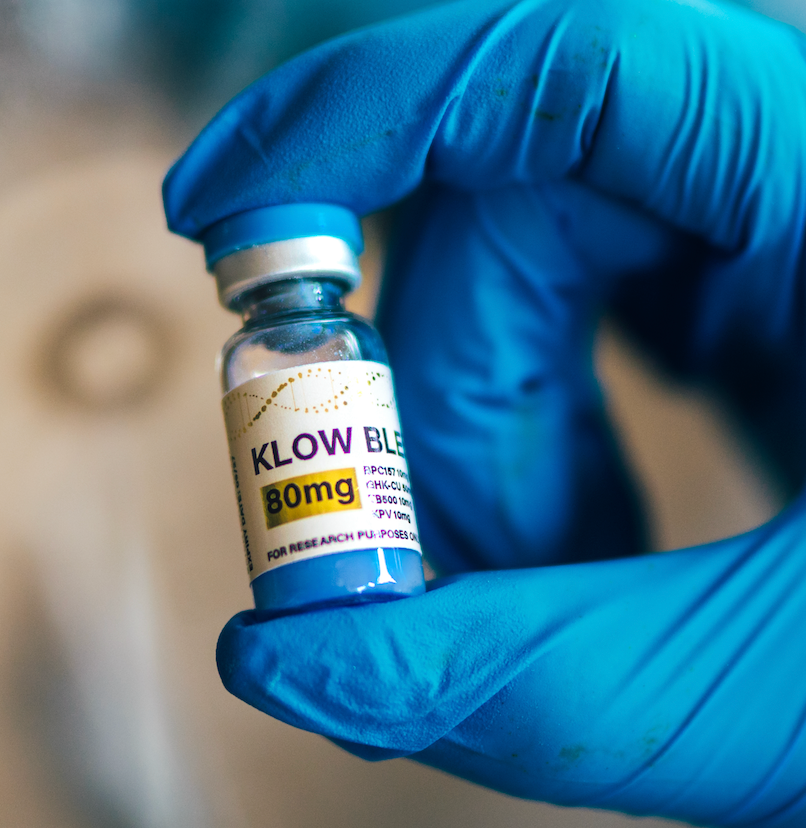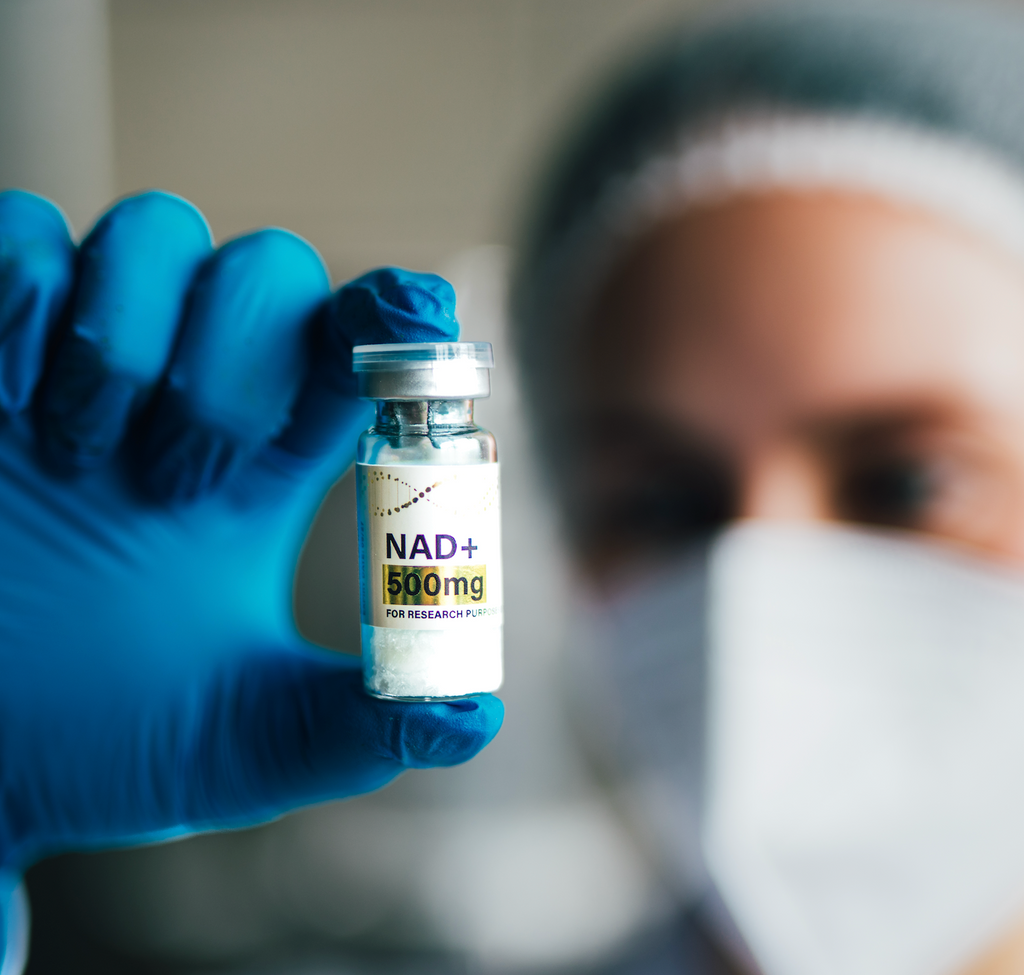🔬 Investigating the Mechanisms of a Multi-Peptide Research Blend: KLOW BLEND (BPC-157, TB-500, KPV, and GHK-Cu)

For informational and scientific research purposes only. The compounds discussed are not approved for human consumption or therapeutic use. All materials must be handled in accordance with UK laws and regulatory guidelines.
🧪 Overview: What Is The KLOW Blend?
In research contexts, combinations of bioactive peptides such as BPC-157, TB-500, KPV, and GHK-Cu are of growing interest due to their individual and potentially synergistic effects on biological pathways involved in cellular repair, inflammation regulation, and tissue regeneration.
While each of these peptides has been studied individually in various in vitro and preclinical models, combining them is hypothesised to offer complementary modes of action. The blend is often studied in lyophilised (freeze-dried) form, which preserves molecular integrity and allows for stable storage in laboratory environments.
⚙️ Mechanistic Highlights of Each Peptide
1. BPC-157
-
A 15-amino acid peptide derived from a partial sequence of a protein found in human gastric juice.
-
Studied extensively in rodent models for its role in supporting angiogenesis, tendon and ligament healing, gut barrier repair, and inflammatory regulation.
-
Appears to interact with nitric oxide pathways and may modulate VEGF and other growth factors in tissue recovery models.
2. TB-500 (Thymosin Beta-4 fragment)
-
A synthetic version of a segment of the naturally occurring protein Thymosin Beta-4, known to assist in actin regulation, cell migration, and wound healing.
-
Preclinical studies have shown TB-500 supports angiogenesis and may accelerate tissue regeneration, particularly in muscle and connective tissues.
-
Often studied for its ability to mobilise stem cells and reduce fibrosis.
3. KPV
-
A tripeptide (Lysine–Proline–Valine) fragment of the alpha-MSH hormone.
-
Demonstrates anti-inflammatory properties in lab studies, particularly via suppression of NF-κB activity and cytokines such as TNF-α, IL-6, and IL-1β.
-
Investigated in models of gut inflammation, epithelial repair, and immune modulation.
4. GHK-Cu
-
A naturally occurring tripeptide (Glycine–Histidine–Lysine) that binds copper ions (Cu²⁺).
-
Widely studied in dermatological and tissue remodelling research for its role in collagen synthesis, wound healing, and antioxidant defence.
-
May influence gene expression, promoting cellular repair, reducing oxidative stress, and restoring extracellular matrix integrity.
🔄 Potential Synergistic Mechanisms Under Study
When examined as a combined blend in research models, these peptides may offer multi-pathway support:
| Biological Process | Contributing Peptides |
|---|---|
| Angiogenesis | BPC-157, TB-500, GHK-Cu |
| Anti-inflammatory signaling | KPV, BPC-157 |
| Tissue and epithelial repair | TB-500, BPC-157, KPV |
| Collagen and ECM support | GHK-Cu |
| Oxidative stress regulation | GHK-Cu, BPC-157 |
Such interactions are hypothesised to be beneficial in studies exploring tissue regeneration, inflammation resolution, and recovery from injury. However, more rigorous data—particularly from well-controlled in vivo or translational research—is needed to clarify the extent and reliability of these effects.
📉 Research Limitations and Gaps
While the individual peptides have encouraging results in animal or cellular models, several limitations remain:
-
Lack of clinical trial data on combinations or long-term effects
-
Unknown interaction dynamics between multiple peptides in vivo
-
Variability in peptide purity and stability among sources
-
Dosing and timing considerations remain undefined in a blended context
-
Limited human translational data beyond small pilot or observational studies
Further research is needed to determine how such peptides behave together, including any potential synergistic, neutral, or even antagonistic interactions.
🧭 Areas of Ongoing Scientific Interest
The following areas are receiving increasing attention in peptide research involving these compounds:
-
Mitochondrial biogenesis and cellular energy pathways
-
Modulation of inflammatory cytokines in epithelial tissues
-
Wound healing and scar tissue formation
-
Fibroblast and keratinocyte activation
-
Copper-mediated gene regulation (via GHK-Cu)
These research directions are largely being pursued in academic or pharmaceutical settings using controlled, licensed environments for laboratory-only compounds.
⚠️ UK Legal and Regulatory Considerations
Under UK law:
-
These peptides are not licensed as medicines and cannot legally be sold, supplied, or marketed for human or veterinary use without MHRA approval.
-
Use is restricted to laboratory-based, non-clinical research.
-
Any suggestion of use in performance enhancement, therapy, or self-administration would breach The Human Medicines Regulations 2012 and related UK legislation.
-
Suppliers and researchers must ensure compliance with proper documentation, lab protocols, and compound handling standards, especially when dealing with lyophilised materials.
🧬 Summary
Peptide blends that include BPC-157, TB-500, KPV, and GHK-Cu are under investigation for their potential to support tissue regeneration, inflammation modulation, and matrix repair via complementary mechanisms. While each component has demonstrated promise in preclinical research, the evidence base for the combined effect of these peptides remains early-stage.
Further peer-reviewed, mechanistic research is essential to understand the full potential — and limitations — of this blend in non-clinical models. Researchers are encouraged to pursue studies with rigour, reproducibility, and full regulatory compliance.
Disclaimer: This content is for research and informational purposes only. The peptides discussed are not licensed medicinal products and are not approved for human consumption or therapeutic use. All research involving such compounds must be conducted under appropriate laboratory conditions and in accordance with all applicable UK laws and MHRA guidelines.

